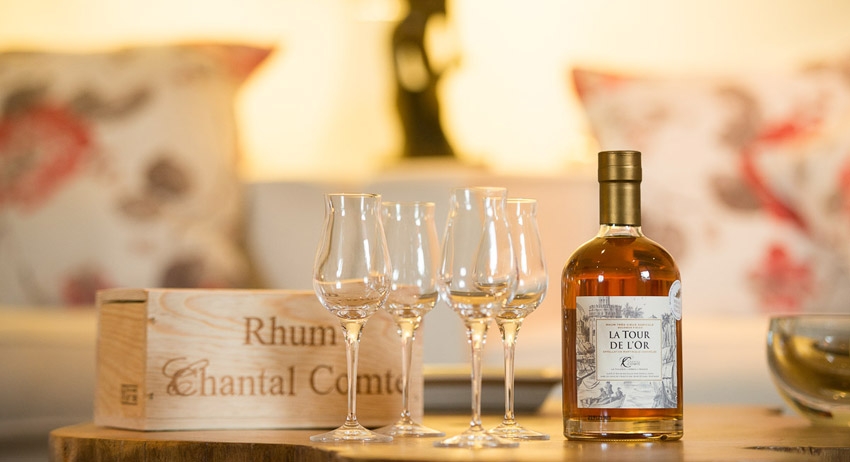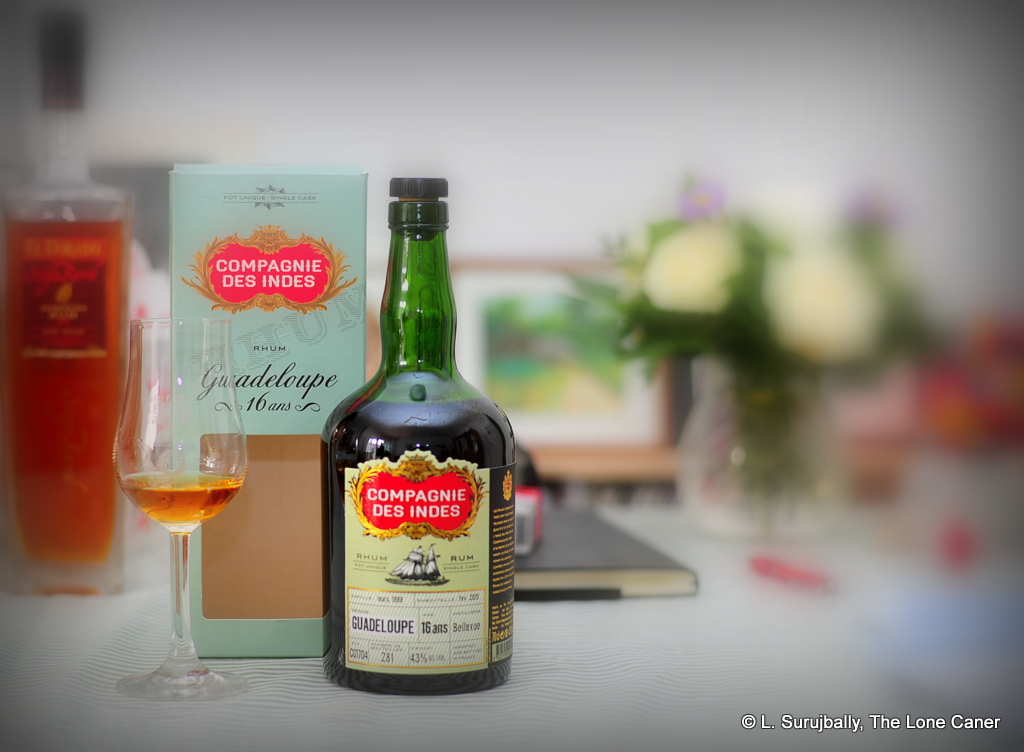
A lovely, light rum , as elegant as a Viennese waltz: it’s missing something at the back end, but nothing that would make me consider telling anyone to steer clear.
Compagnie des Indes so intrigued me when I first came across their Cuban rum back in early 2015, that I’ve already looked at two of their more offbeat products (from Fiji and Indonesia), and have detailed notes on five more commercially minded ones, which I’ll try to deal with in the next weeks and months (in between every other rum I want to write about). This one hails from Guadeloupe and is a solid entry to the genre without breaking too much new ground or attempting to reinvent the wheel.
Bellevue (Le Moule) is actually a subset of Damoiseau, and is separated from its better known big brother in order to distinguish its molasses rums from the cane juice products Damoiseau more commonly produces. It’s located NE of Grand Terre (not Marie Galante…the other Bellevue which provided several iterations from Duncan Taylor and Cadenhead is there) . In 2015 CDI got in on the act when the issued this sixteen year old rum (it’s a whisker short of seventeen), but have made no effort to distinguish the two Bellevues (except to me, because I asked to clear up my confusion…thanks Florent.)
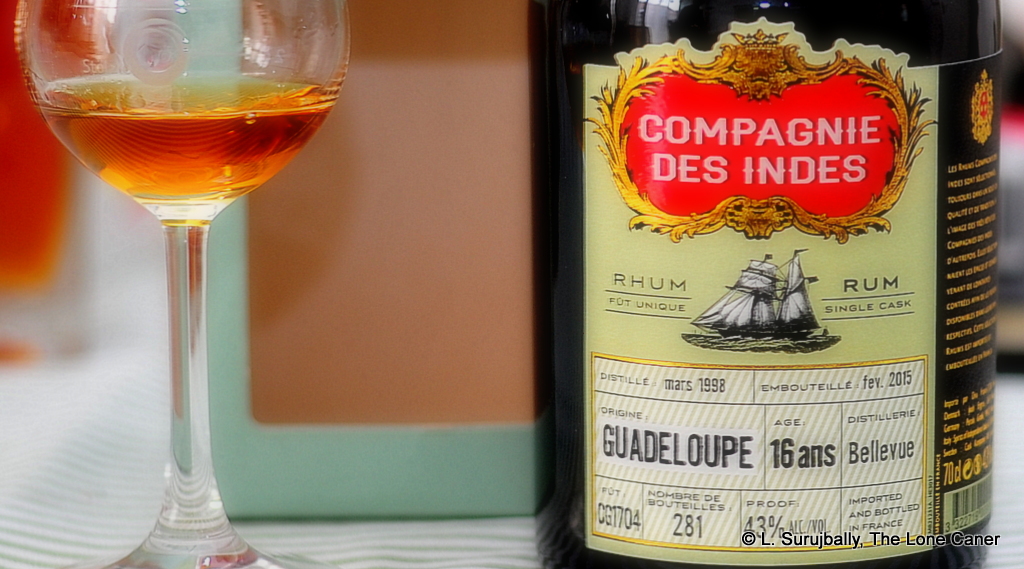
It’s always useful to know ahead of time where an aged rum was in fact aged, because as many writers before me have pointed out, tropical maturation is faster than Continental ageing, and the resultant qualities of the final product diverge: Velier, for example, has always favoured the tropics and ages there, which goes somewhat to explaining the intensity of its rums; while CDI prefers more subtle variations in its rums deriving from a prolonged rest in Europe. Knowing that helped me understand the staid elegance of a rum like this one. The nose, easy and warm at 43%, presented soft and fruity without hurry, with some driness, cardboard, and pickles (yeah, I know, I know…). Pears, ripe apples and white guavas, with a hint of zest, something like tangerine peel mixed up with some bubble-gum, plus an undercurrent of burnt sugar lending a very pleasing counterpoint.
At 43% the texture of this golden rum was medium bodied trending to light, and pleasant for all that. It was unusually dry and a bit too oaky, I felt – the tannins provided a dominance that somewhat derailed the other parts of the profile. It started out a little soft — bananas, kiwi fruit and white flowers — before nectarines and fresh cucumber slices on rye bread emerged, which in turn gave way to ginnip and unripe apples and mangos. It took time to get all this and the integration of all these elements was not perfect: still, overall it was a perfectly serviceable rum, with a short, crisp, clear finish redolent of caramel, sugar cane juice, vanilla and more fruitiness that was light and sweet without ever getting so complex as to defy description.
There’s a certain clear delicacy of profile that has run through the Compagnie’s rums I’ve tried thus far. They do not practice dosing, which is part of the explanation – the European ageing is another – but even so, they are uniquely distinct from other independent bottlers who also follow such practices. This and the relatively low strength makes their rums possess an unhurried, easygoing nature that is not to everyone’s taste (least of all full proof rummies or cask strength whisky lovers). This one in particular lacks overall development, but makes up for it with interesting tastes you have to work at to discern, and at end it was a rum you would not be unhappy to have shelled out for. At under sixty euros (if you can still find it) it’s pretty good value for money, and gives a really good introduction to the profile of a Guadeloupe outfit with which not everyone will be familiar and whose rums are nothing to sneeze at.
(#271 / 85/100)
Other notes
- Distilled March 1998, bottled February 2015
- 281 bottle outturn
- No additives, filtering or adulteration.
- Masters of Malt remarks this is made from molasses, not cane juice. Florent, when contacted, said: “Yes indeed it s a molasses rum. There are two Bellevue distilleries in Guadeloupe. One on Marie Galante producing cane juice rums. Another one at Le Moule producing molasses sometimes.”

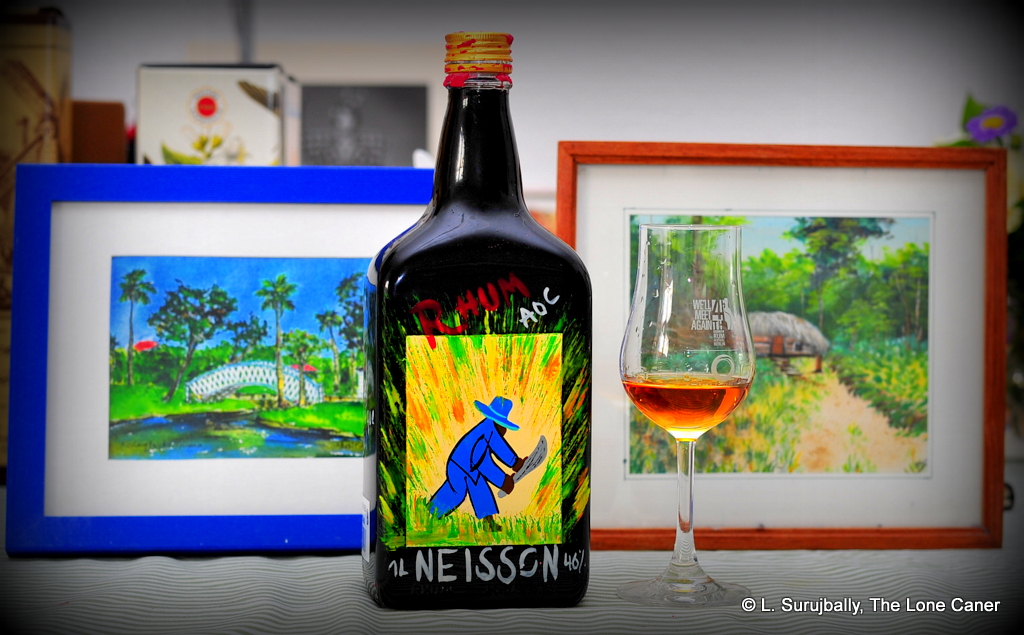
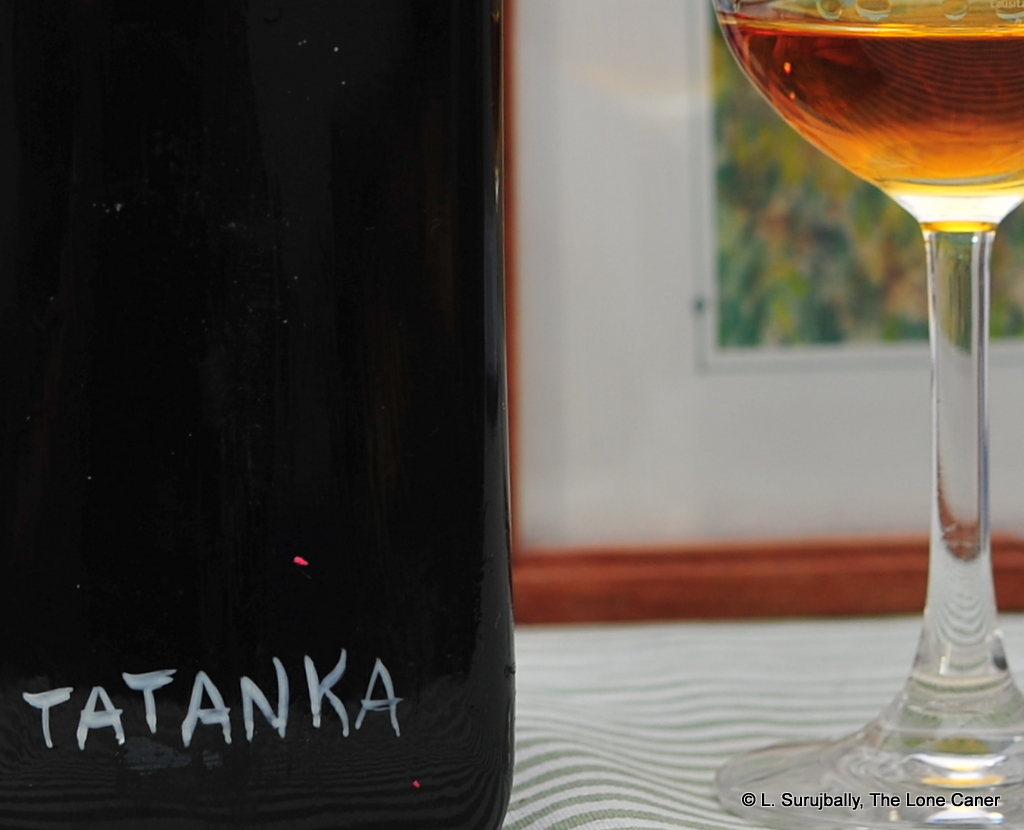 Okay, I jest a little, but consider the nose on the 46% orange-gold spirit. It displayed that same spicy, musky and almost meaty scent of salt butter and olives and tequila doing some bodacious ragtime, sweat and stale eau-de-vie going off in all directions. It was thick and warm to smell, mellowing out into more fleshy, overripe (almost going bad) mangoes and papayas and pineapples, just not so sweet. Spices, maybe cardamom, and some wet coffee grounds. At the back end, after a while, it was possible to detect the leather and smoke and slight bitter whisper of some wood tannins hinting at some unspecified ageing, but where was the crisp, clear aroma of an agricole? The grasses and herbaceous lightness that so characterizes the style? I honestly couldn’t smell it clearly, could barely sense it – so, points for originality, not so much for recognition (though admittedly, that was just me, and your own mileage may vary;
Okay, I jest a little, but consider the nose on the 46% orange-gold spirit. It displayed that same spicy, musky and almost meaty scent of salt butter and olives and tequila doing some bodacious ragtime, sweat and stale eau-de-vie going off in all directions. It was thick and warm to smell, mellowing out into more fleshy, overripe (almost going bad) mangoes and papayas and pineapples, just not so sweet. Spices, maybe cardamom, and some wet coffee grounds. At the back end, after a while, it was possible to detect the leather and smoke and slight bitter whisper of some wood tannins hinting at some unspecified ageing, but where was the crisp, clear aroma of an agricole? The grasses and herbaceous lightness that so characterizes the style? I honestly couldn’t smell it clearly, could barely sense it – so, points for originality, not so much for recognition (though admittedly, that was just me, and your own mileage may vary; 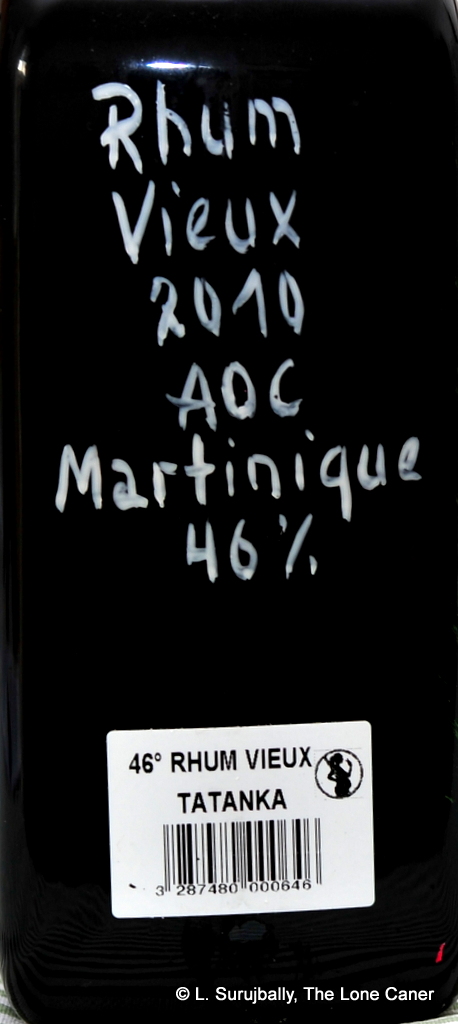 Still, there was little to find fault with once I actually got around to tasting the medium-going-on-heavy rhum. Once one got past the briny, slightly bitter initial profile, things warmed up, and it got interesting in a hurry. Green olives, peppers, some spice and bite, sure, but there was softer stuff coiling underneath too: peaches, apricots, overripe cherries (on the verge of going bad); salt beef and butter again (the concomitant creaminess was quite appealing), and I dunno, a chutney of some kind, stuffed with dill and sage. Like I said, really interesting – it was quite a unique taste profile. And the finish followed along from there – soft and warm and lasting, with sweet and salt and dusty hay mixing well – I am not reaching when I say it reminded me of the mingled dusty scents of a small cornershop in Guyana, where jars of sweets and medicines and noodles and dried veggies were on open display, and my brother and I would go to buy nibbles and maybe try to sneak into the pool hall next door.
Still, there was little to find fault with once I actually got around to tasting the medium-going-on-heavy rhum. Once one got past the briny, slightly bitter initial profile, things warmed up, and it got interesting in a hurry. Green olives, peppers, some spice and bite, sure, but there was softer stuff coiling underneath too: peaches, apricots, overripe cherries (on the verge of going bad); salt beef and butter again (the concomitant creaminess was quite appealing), and I dunno, a chutney of some kind, stuffed with dill and sage. Like I said, really interesting – it was quite a unique taste profile. And the finish followed along from there – soft and warm and lasting, with sweet and salt and dusty hay mixing well – I am not reaching when I say it reminded me of the mingled dusty scents of a small cornershop in Guyana, where jars of sweets and medicines and noodles and dried veggies were on open display, and my brother and I would go to buy nibbles and maybe try to sneak into the pool hall next door.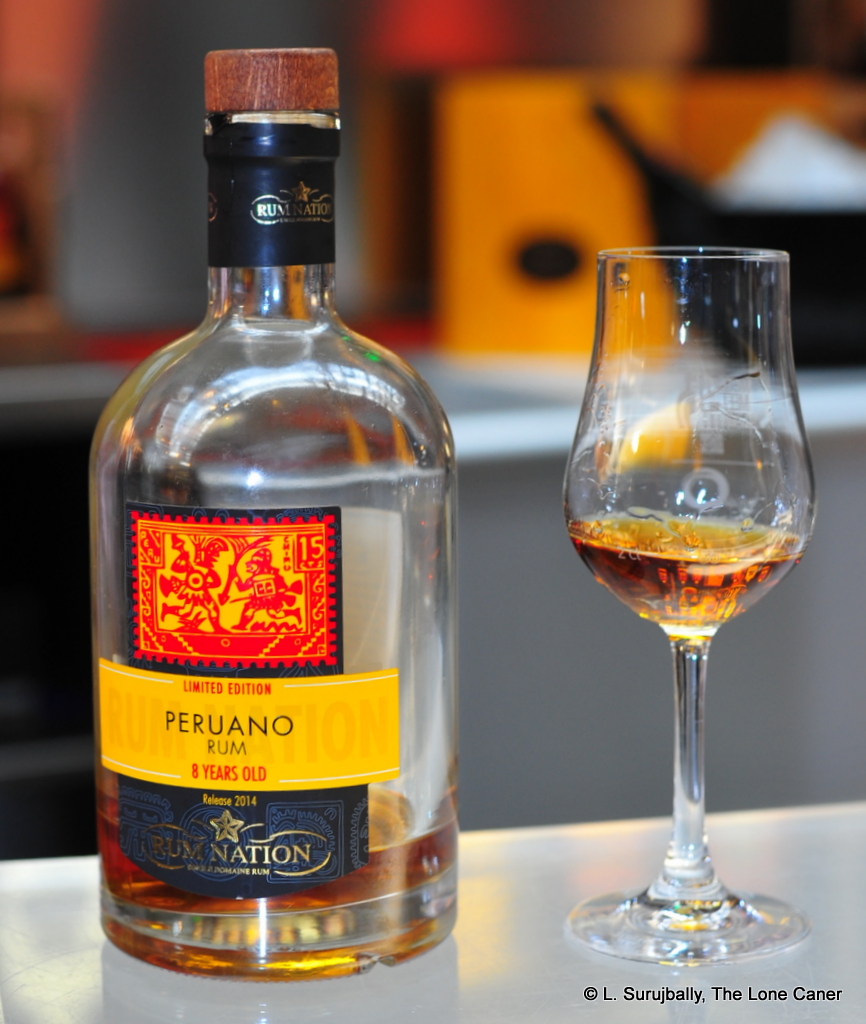
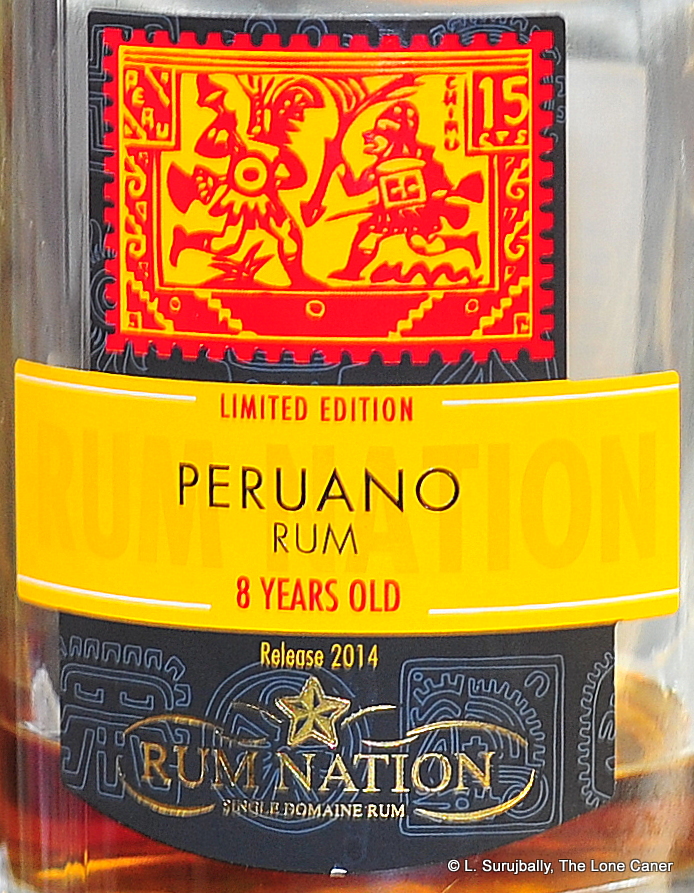 Anyway, the Peruano 8: an dark gold-copper coloured rum, clocking in at 42% ABV, and deriving from the Trujillo gents who also make the Cartavio XO. Fabio told me once that some years back he was seeking a very light, delicate rum to take on Zacapa, and thought he found it in Peru, in the Pomalca distillery which also produces the Cartavio on what looks like a muticolumn still. The initial rums he got from there formed the Millonario 15 and XO rums, and these were successful enough for him to issue a Peruvian in its own right, aged for eight years in bourbon casks. No more mucking about with soleras here.
Anyway, the Peruano 8: an dark gold-copper coloured rum, clocking in at 42% ABV, and deriving from the Trujillo gents who also make the Cartavio XO. Fabio told me once that some years back he was seeking a very light, delicate rum to take on Zacapa, and thought he found it in Peru, in the Pomalca distillery which also produces the Cartavio on what looks like a muticolumn still. The initial rums he got from there formed the Millonario 15 and XO rums, and these were successful enough for him to issue a Peruvian in its own right, aged for eight years in bourbon casks. No more mucking about with soleras here. Rumaniacs Review 018 | 0418
Rumaniacs Review 018 | 0418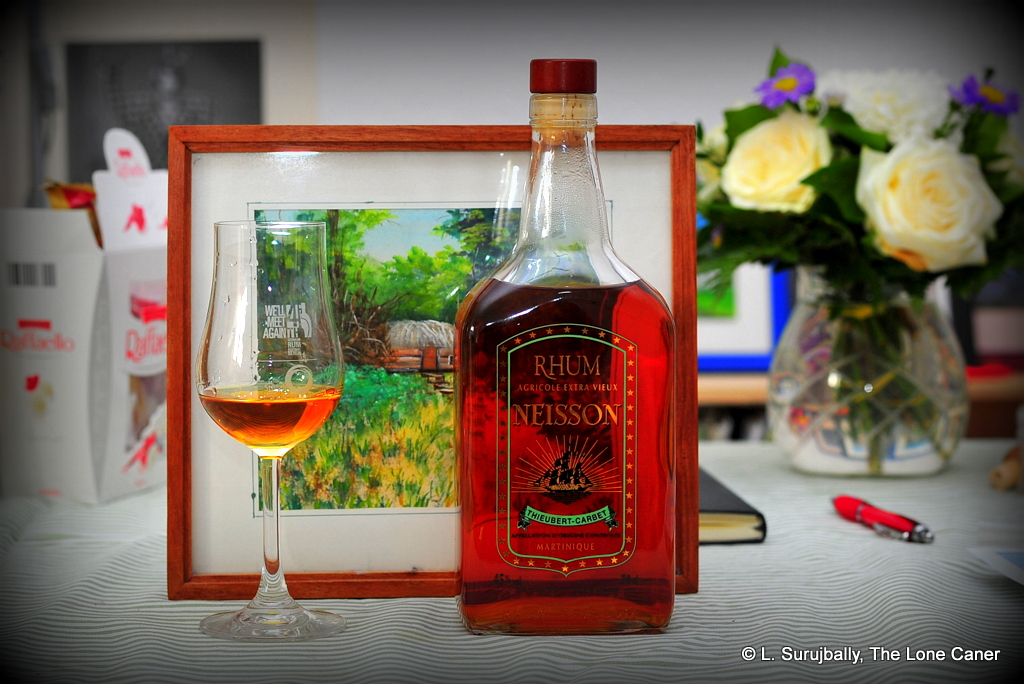
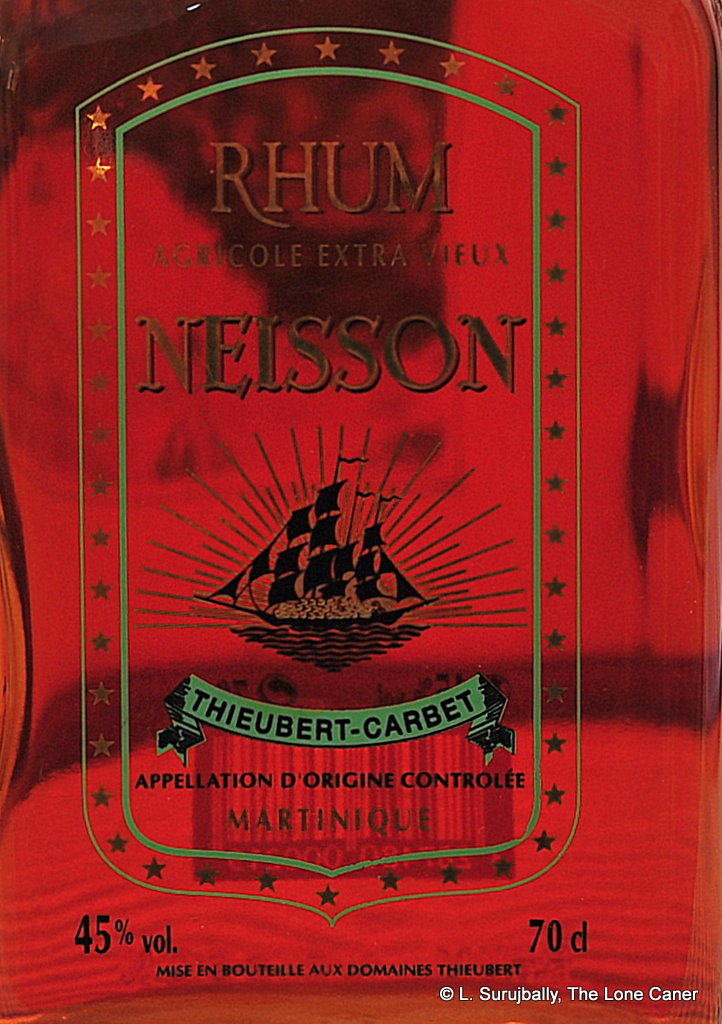
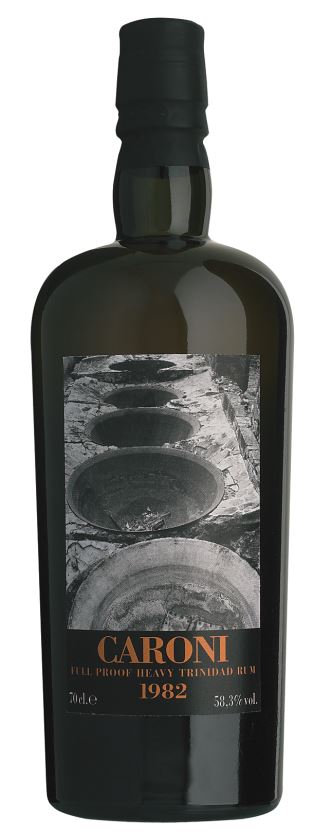 Rumaniacs Review 017 | 0417
Rumaniacs Review 017 | 0417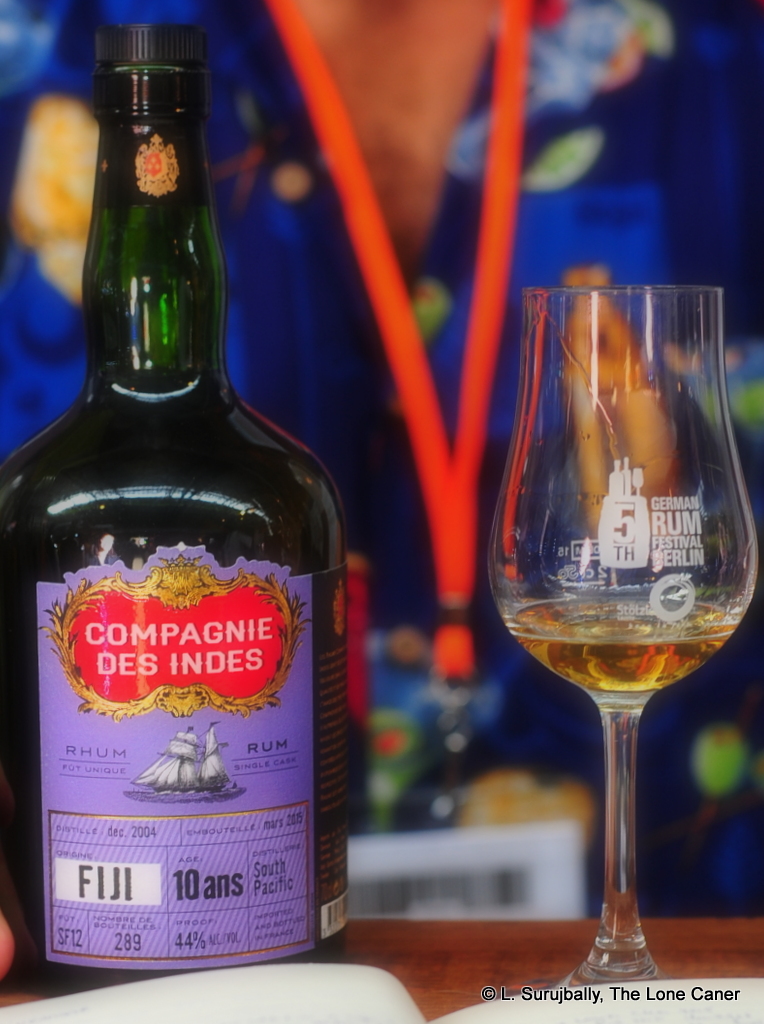
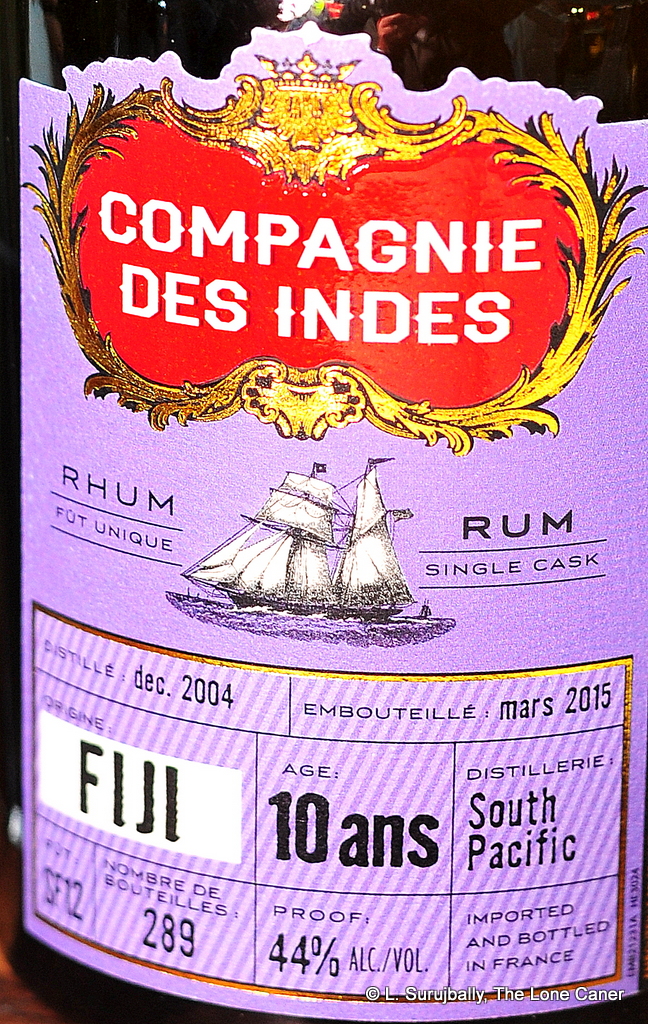 palled my enjoyment somewhat.
palled my enjoyment somewhat.
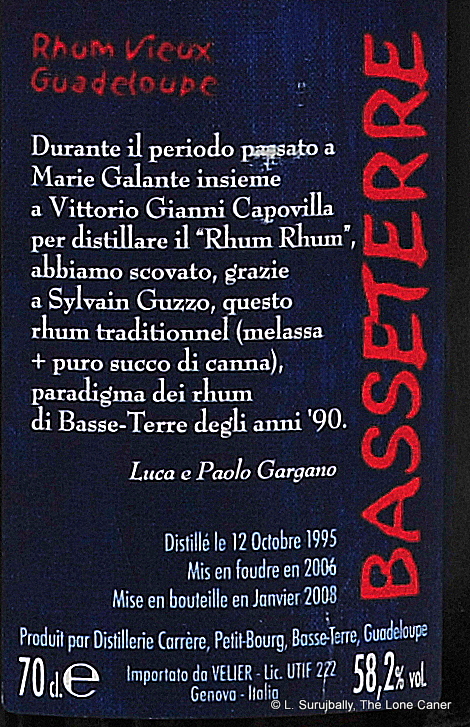
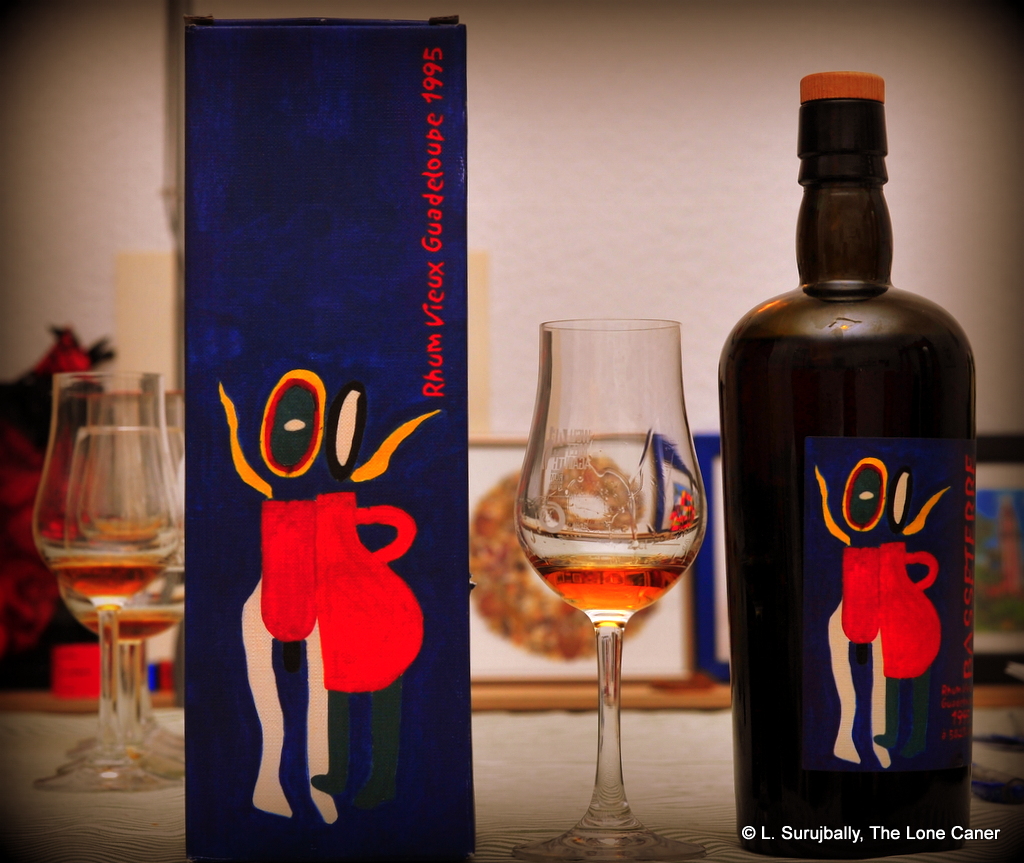
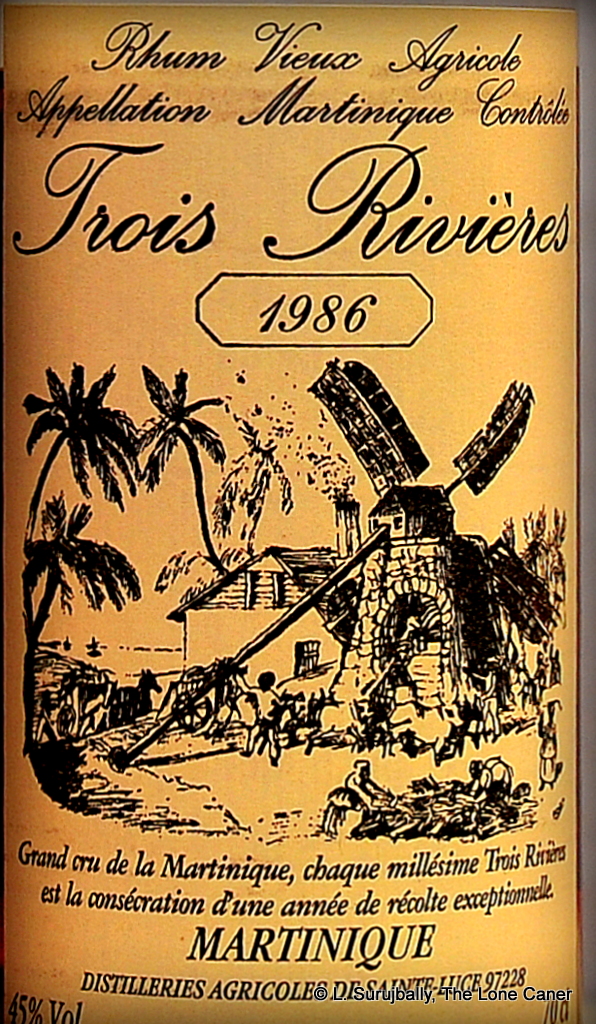
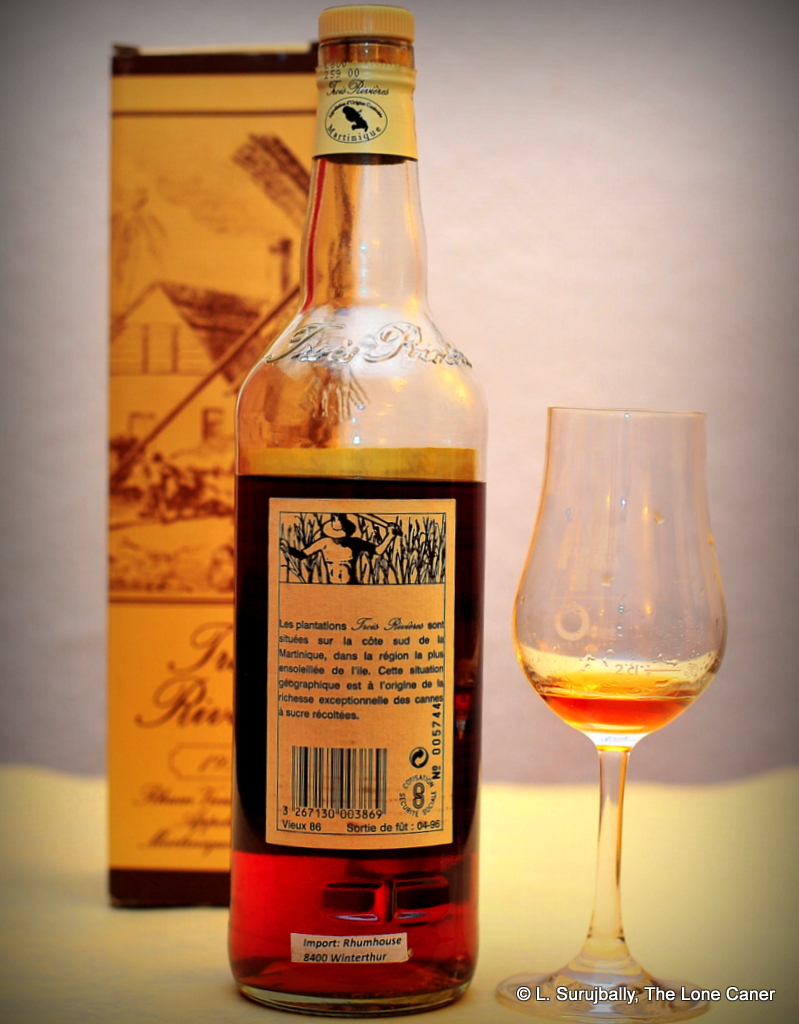
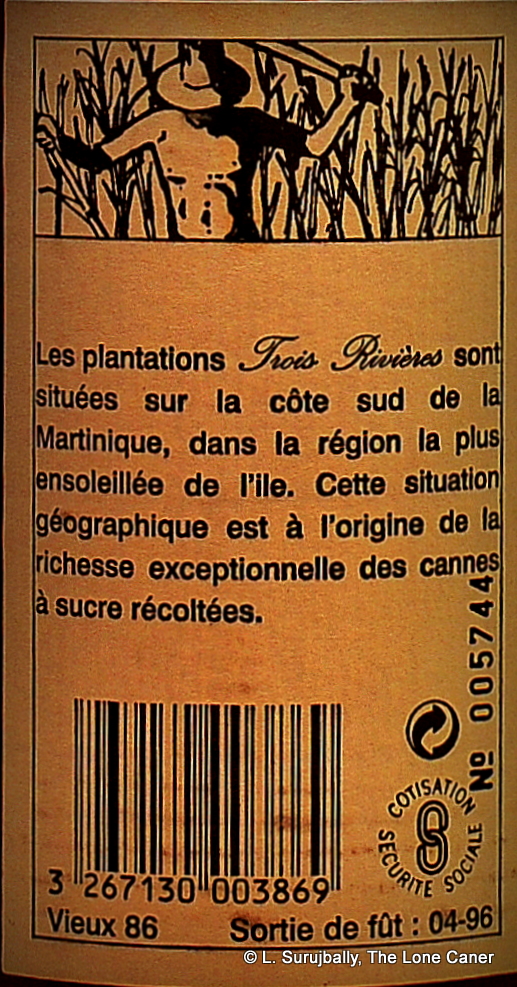 The question I asked of the 1975 (which I was using as a control alongside the Rhum Rhum Liberation Integrale, the
The question I asked of the 1975 (which I was using as a control alongside the Rhum Rhum Liberation Integrale, the 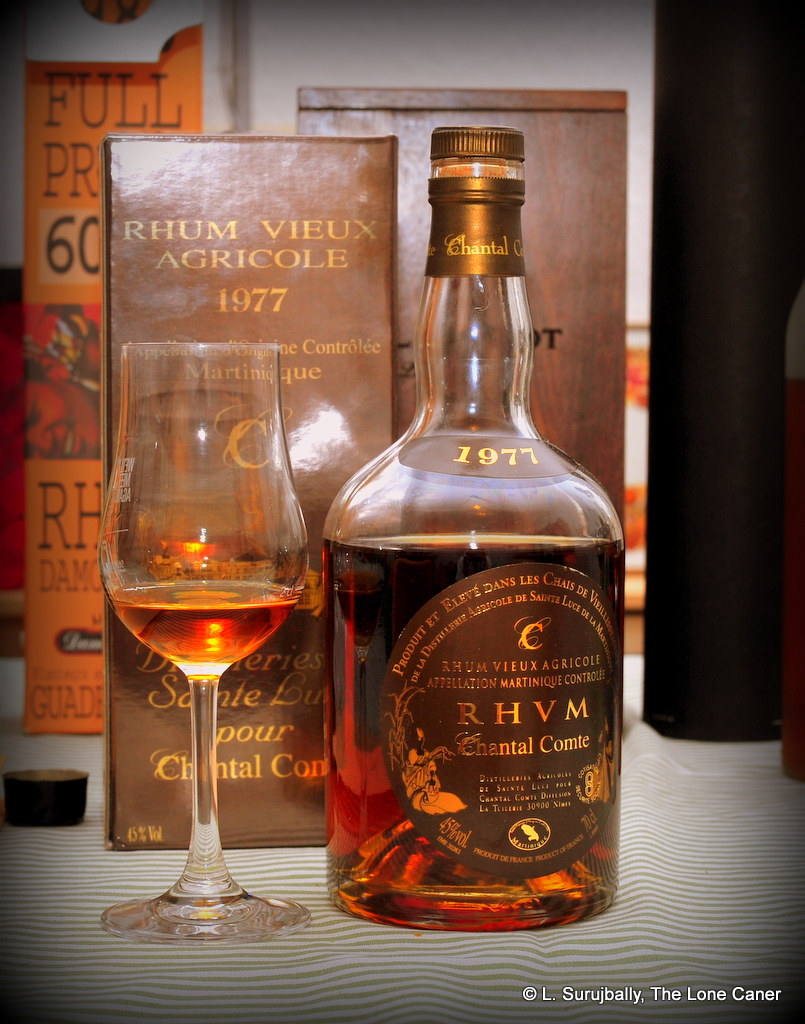
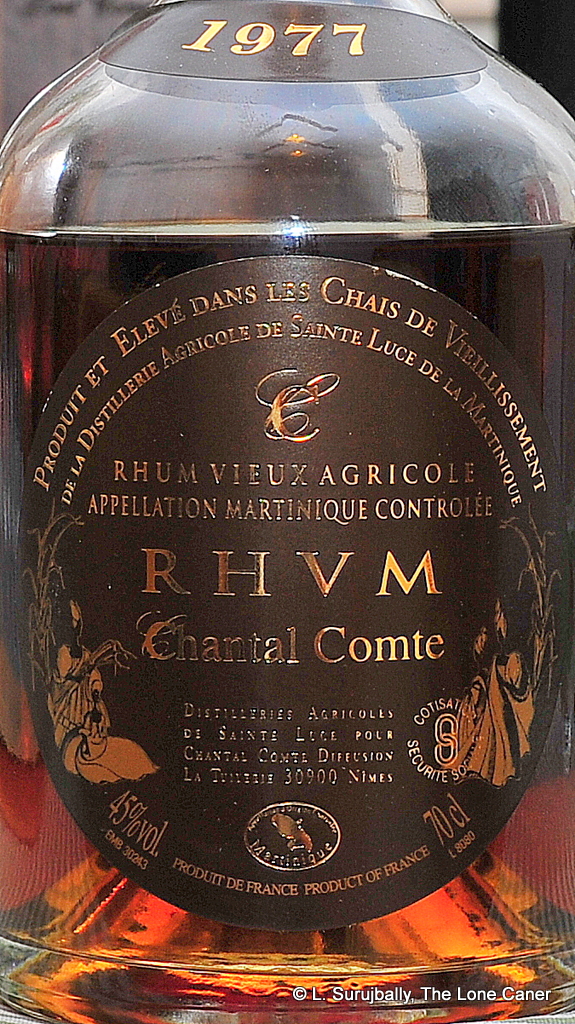 out ever letting you forget they existed. Salt beef in brine, red olives, grass, tannins, wood and faint smoke were more readily discernible, mixed in with heavier herbs like fennel and rosemary. These well balanced aromas were tied together by duskier notes of burnt sugar and vanillas and as it stood and opened up, slow scents of cream cheese and marshmallows crept out to satisfy the child within.
out ever letting you forget they existed. Salt beef in brine, red olives, grass, tannins, wood and faint smoke were more readily discernible, mixed in with heavier herbs like fennel and rosemary. These well balanced aromas were tied together by duskier notes of burnt sugar and vanillas and as it stood and opened up, slow scents of cream cheese and marshmallows crept out to satisfy the child within.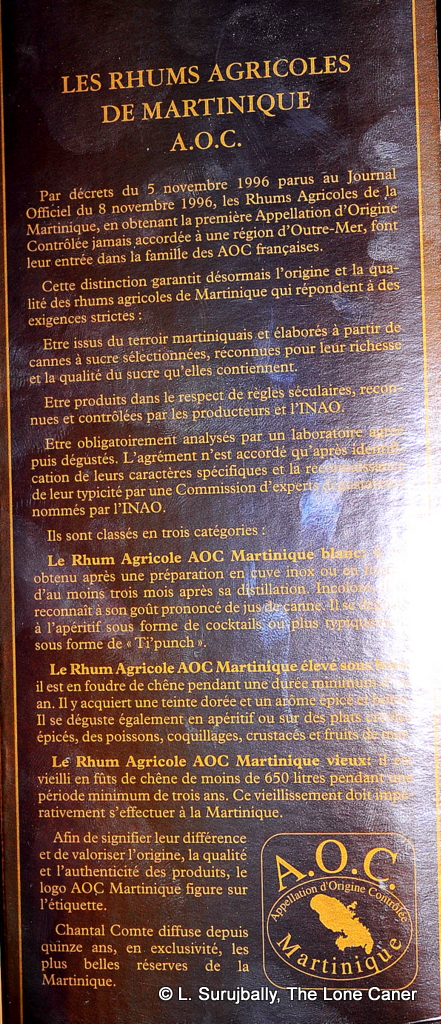
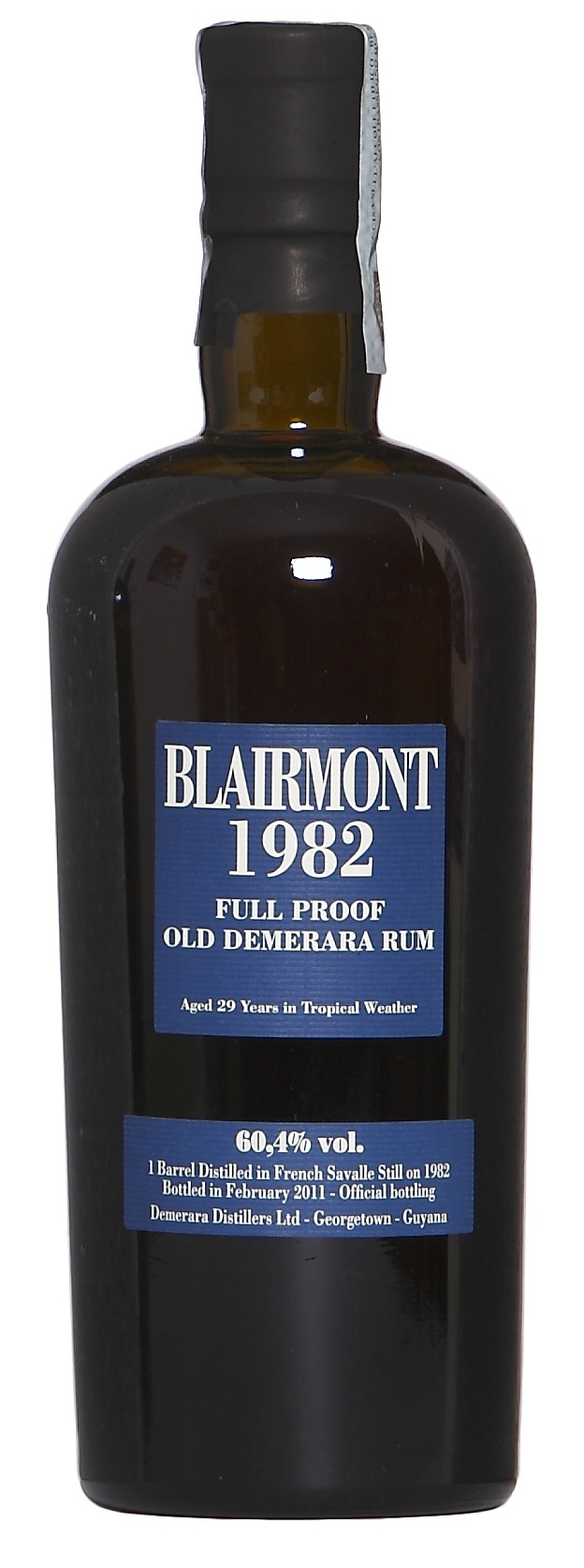 Rumaniacs Review 015 | 0415
Rumaniacs Review 015 | 0415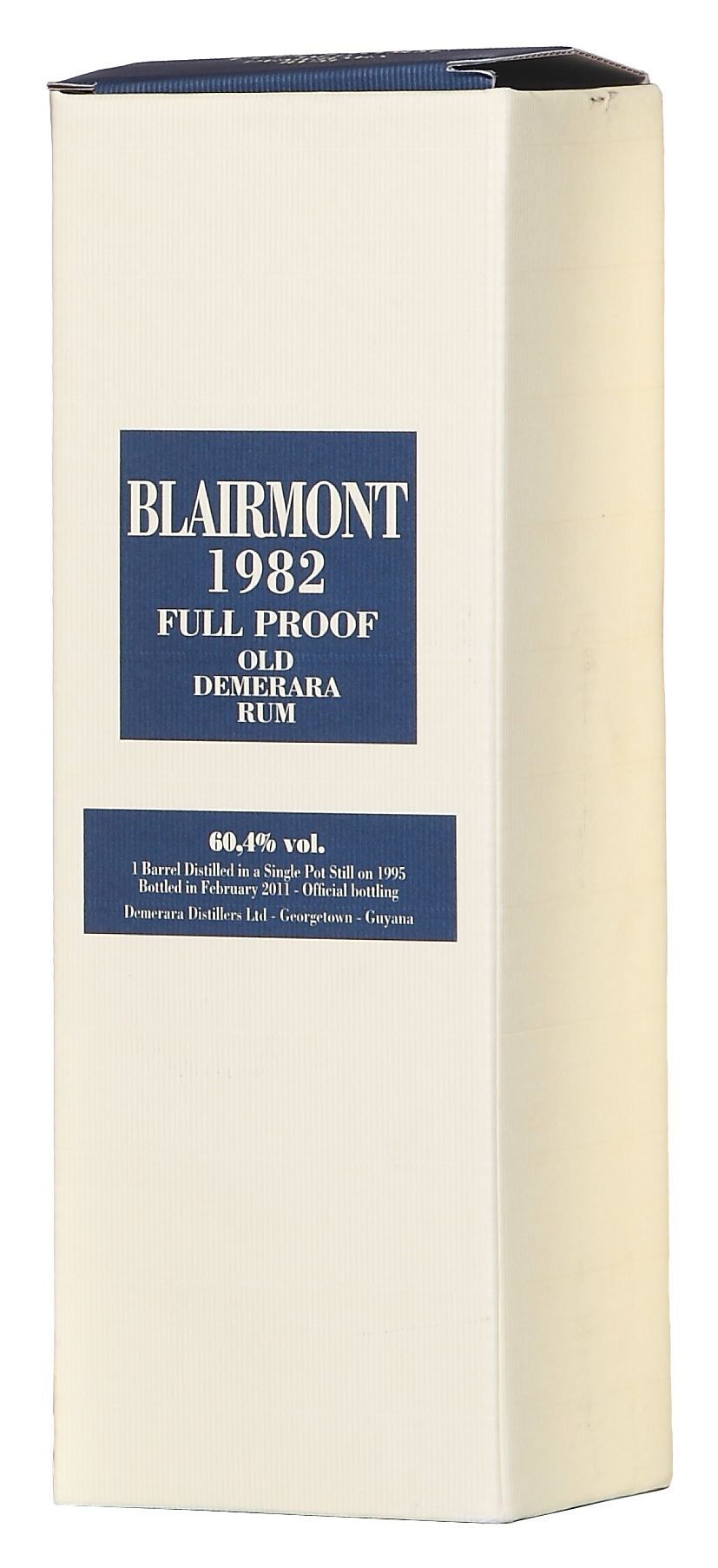
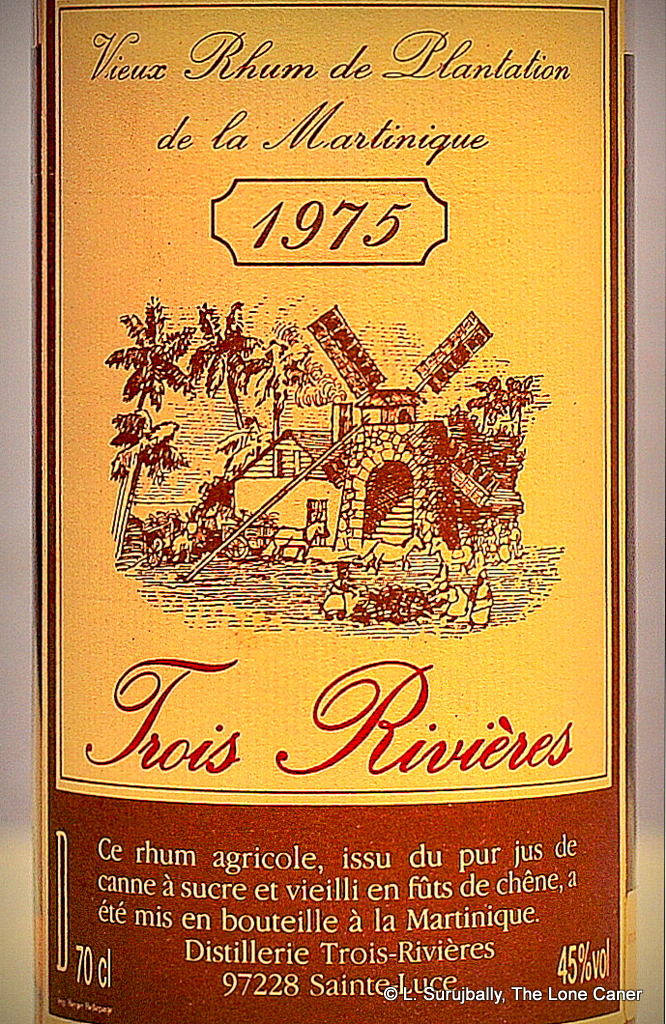
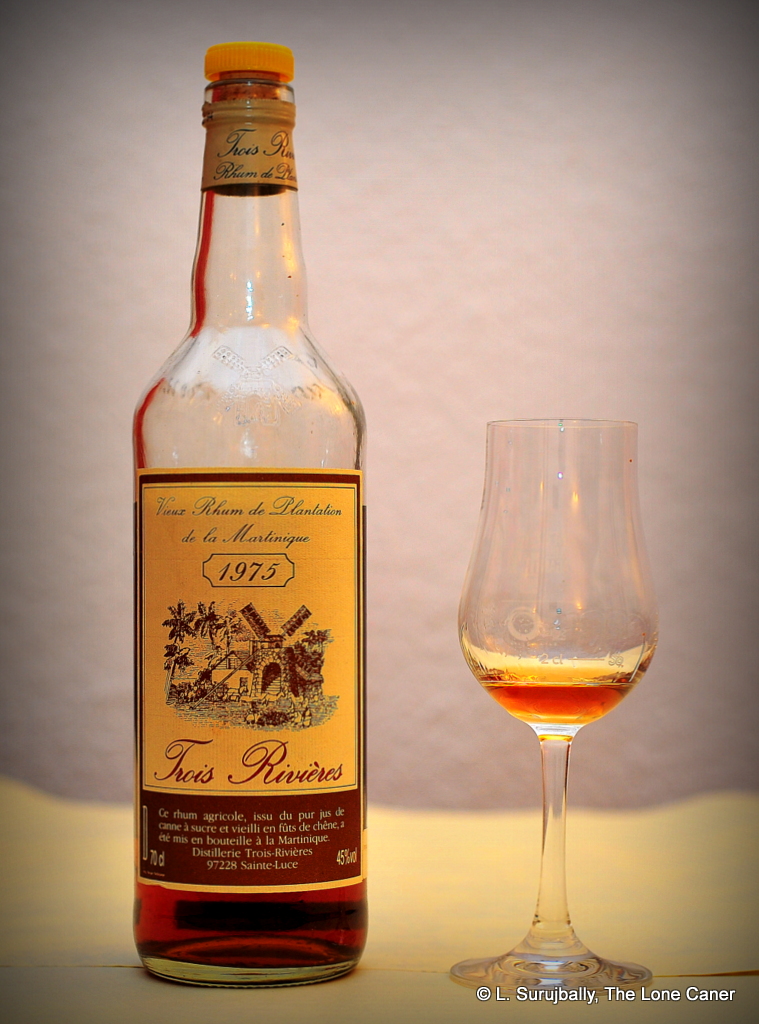
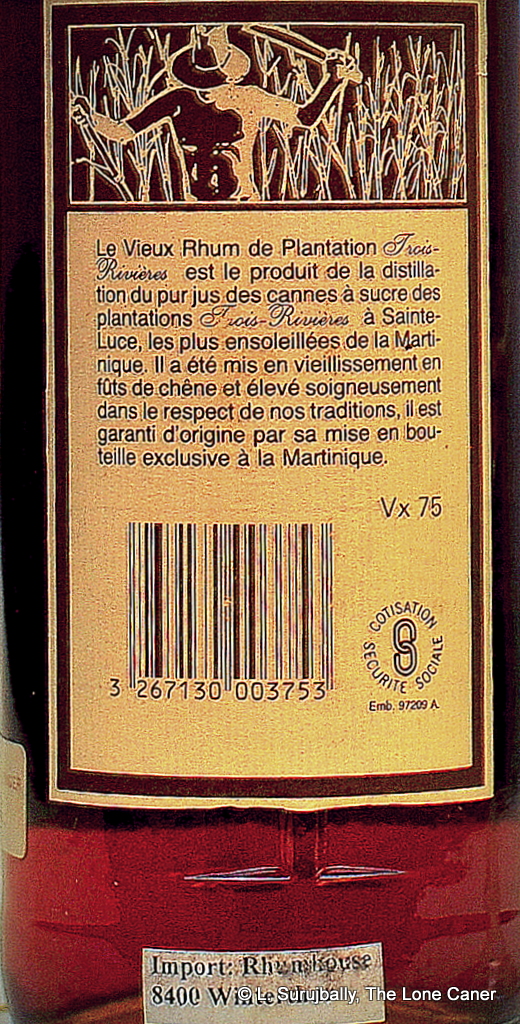
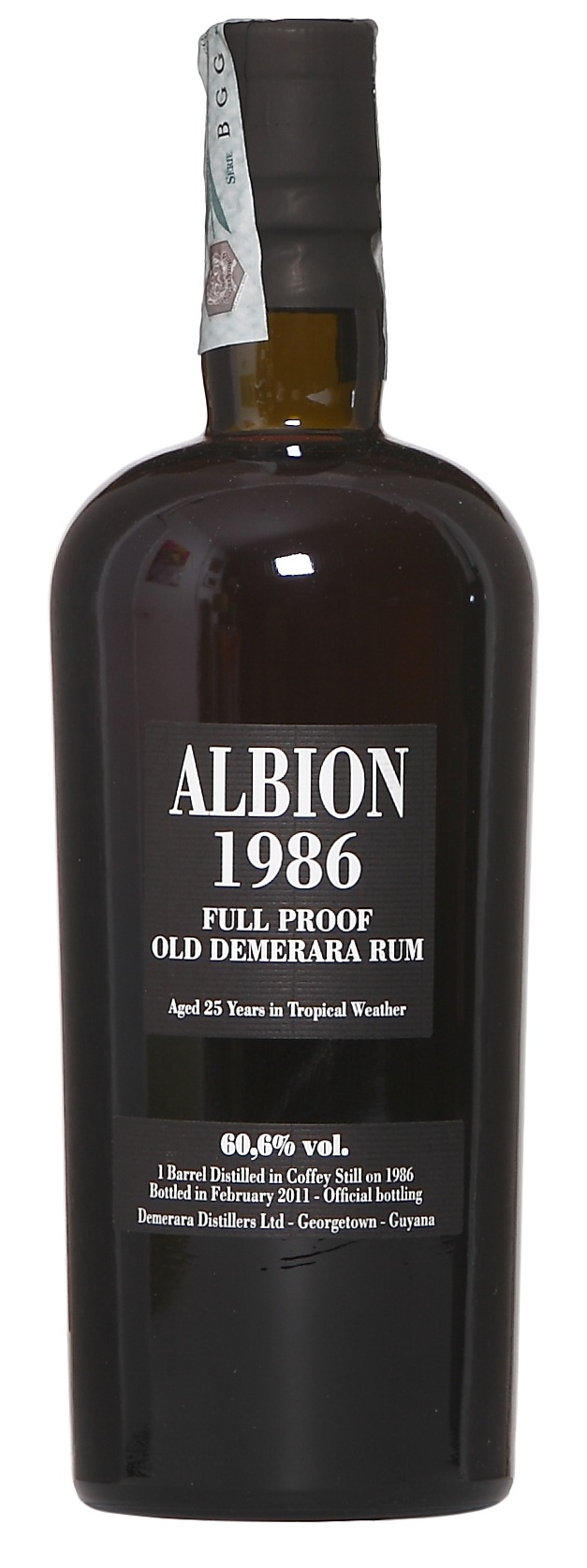 Rumaniacs Review 013 | 0413
Rumaniacs Review 013 | 0413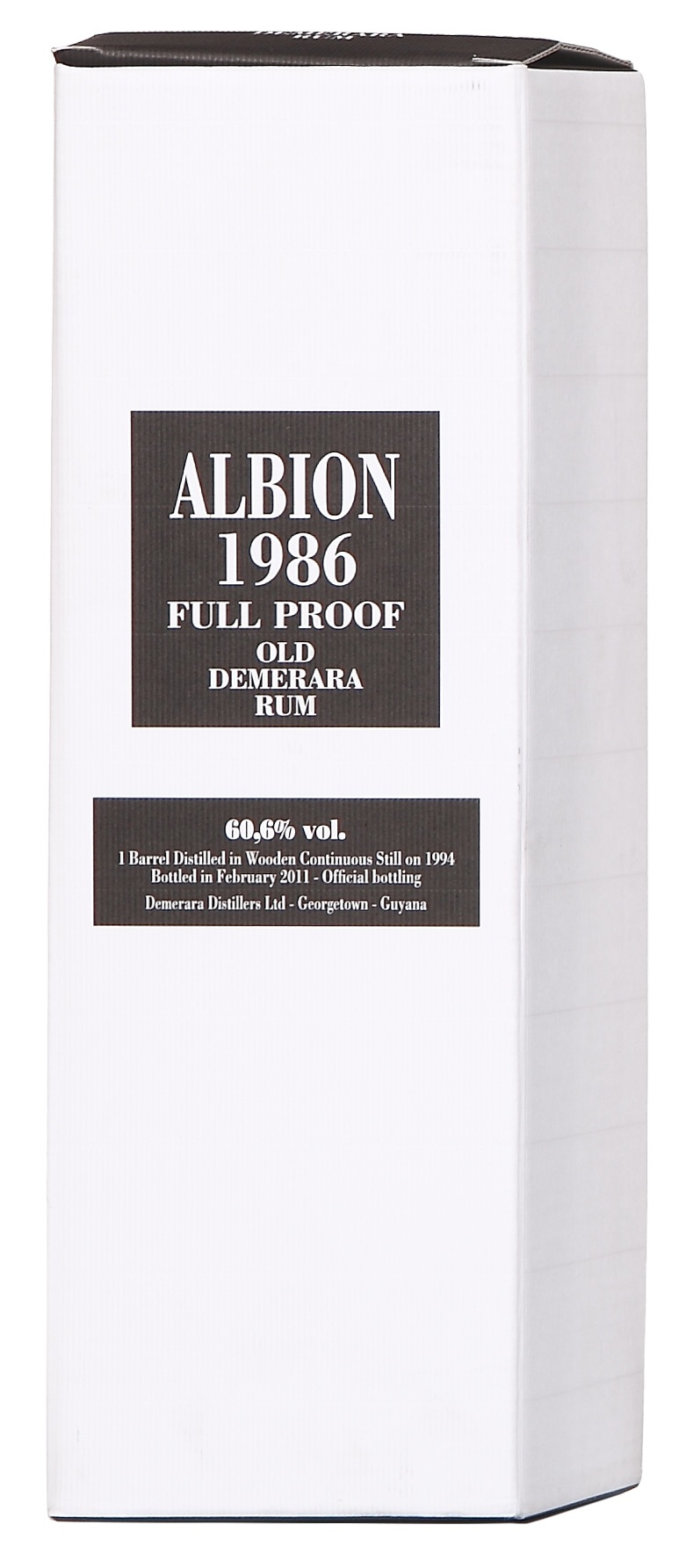
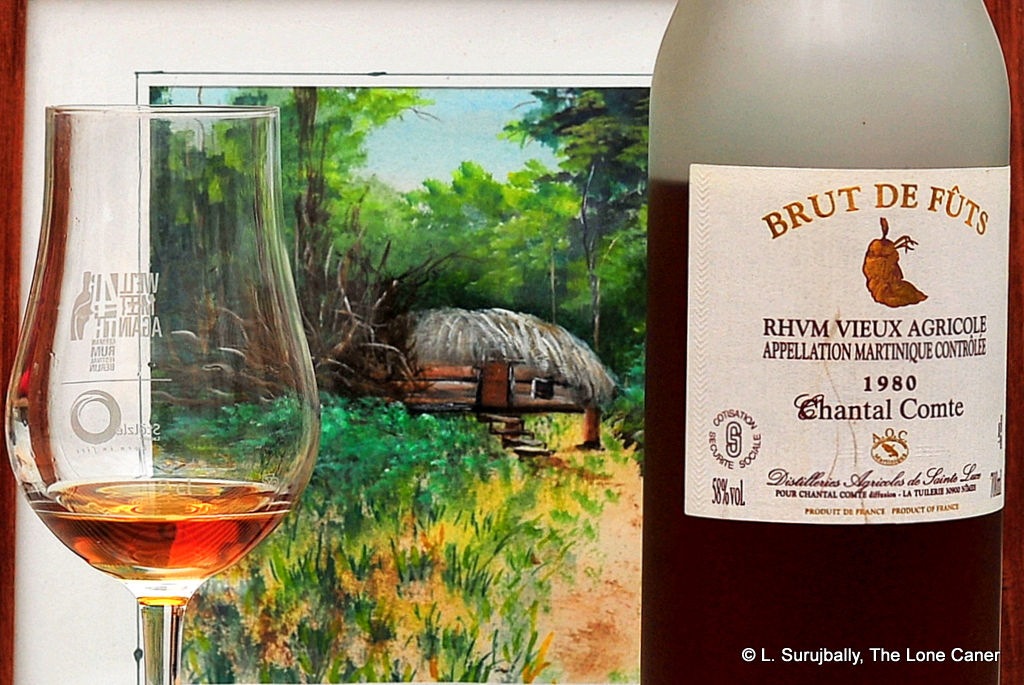
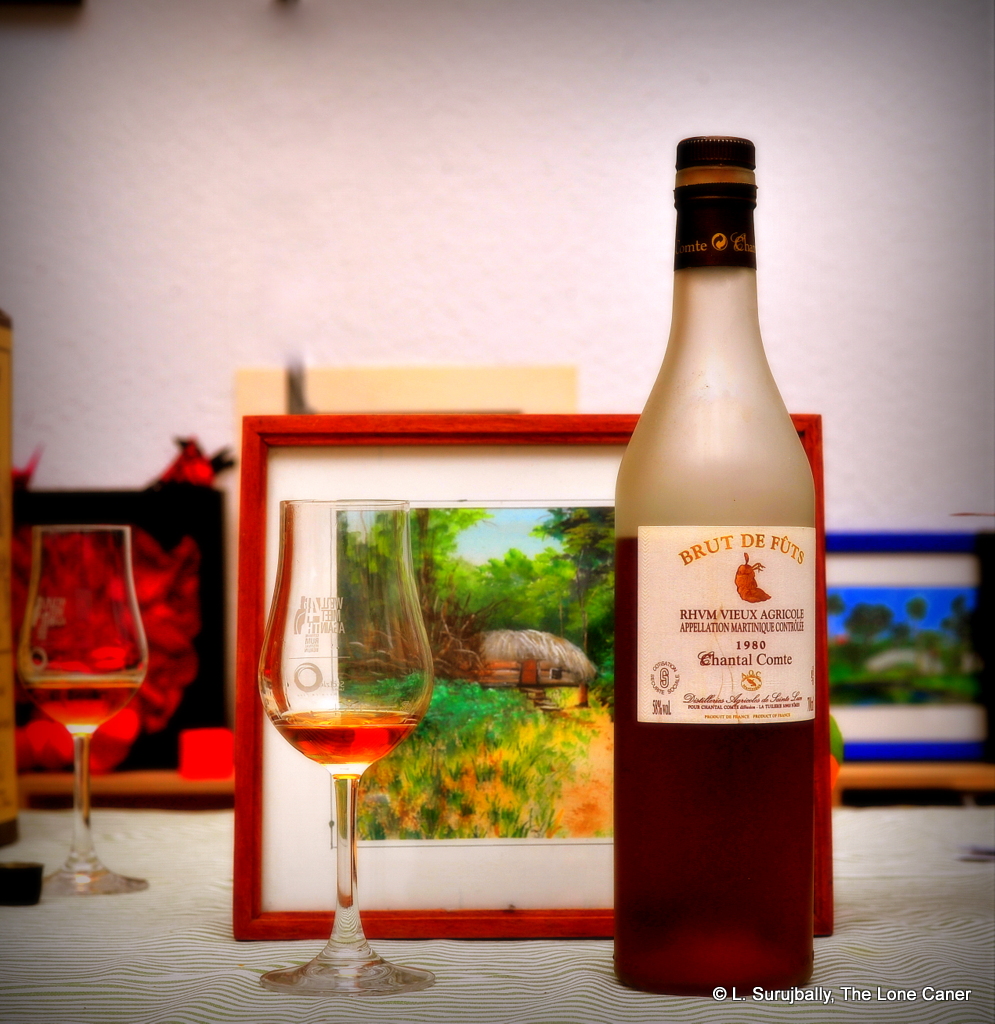
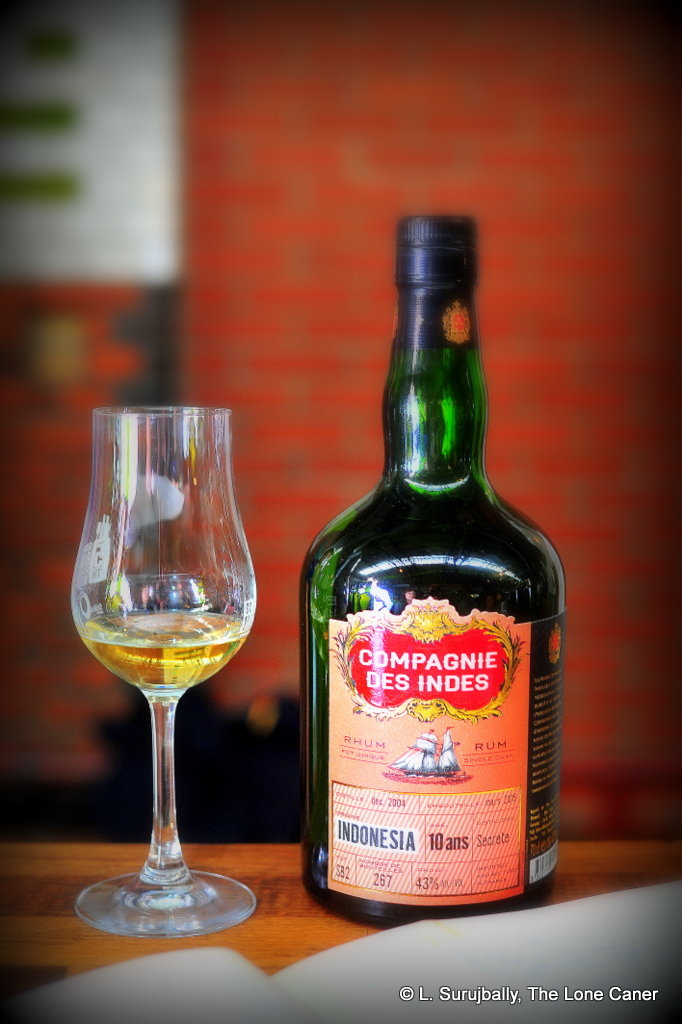
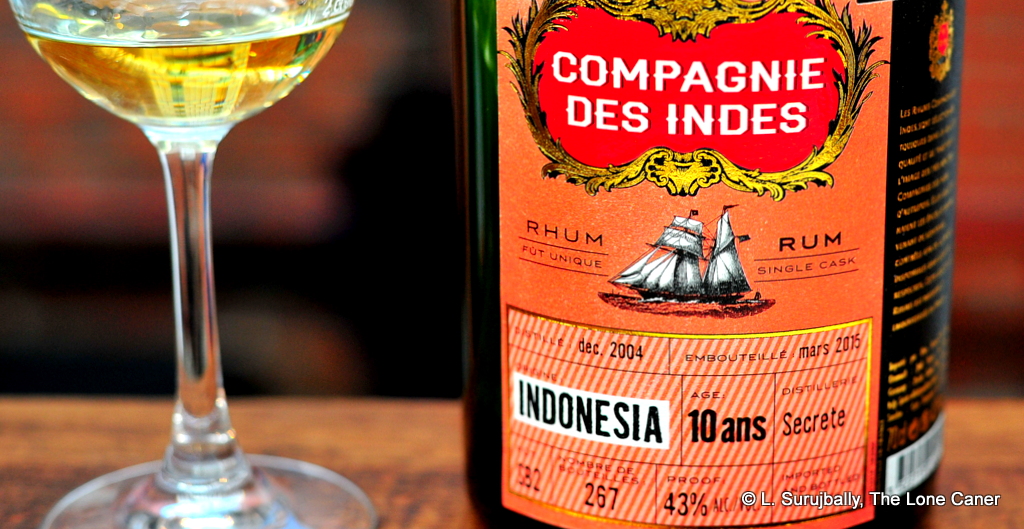
 Rumanicas Review 010 | 0410
Rumanicas Review 010 | 0410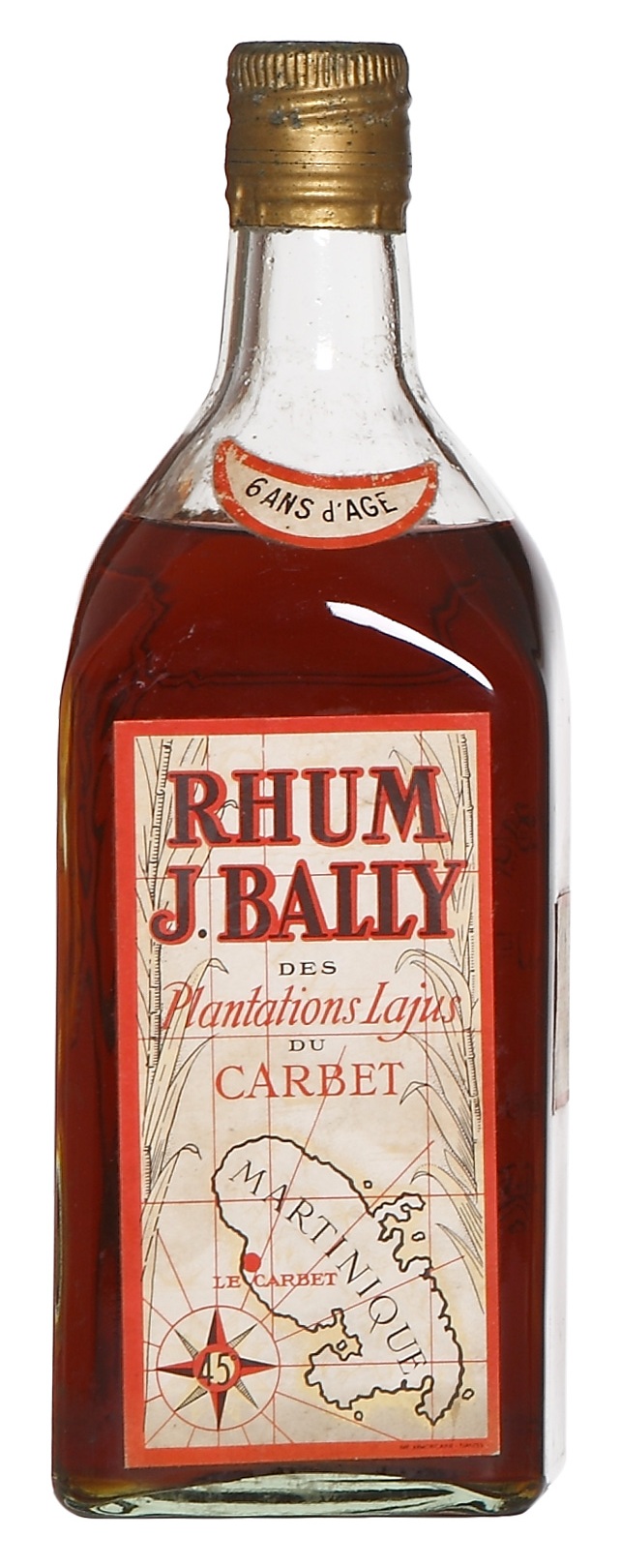
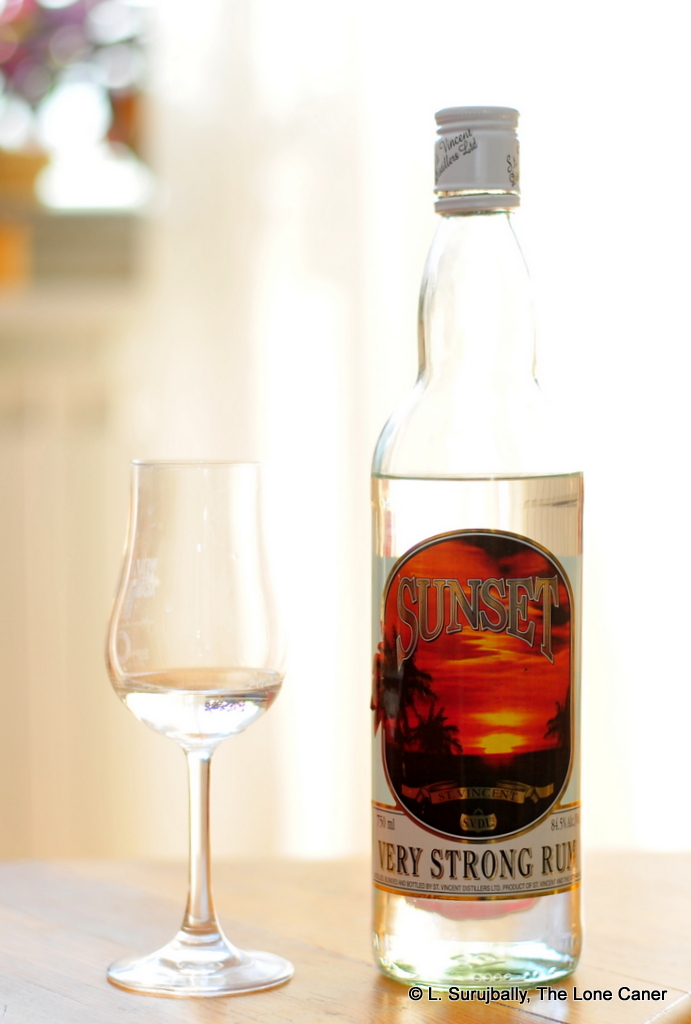 Hulk no like puny rum. Hulk smash. The last and strongest of the overproof howitzers batters my glass.
Hulk no like puny rum. Hulk smash. The last and strongest of the overproof howitzers batters my glass. The (cautiously assessed) nose was extremely sharp, a glimmering silver blade of pure heat. For all that, once the bad stuff burned off, I was amazed by how much was going on under the hood. Initially, there was an explosion of an abandoned Trojan factory installed in the Batcave, fresh cut onions, sweat and oil, crazy crazy intense. Stick with it, though, is my advice – because it did cool off (a little). And then there were vanilla aromas, some cane sap, coconut shavings and red ripe cherries, a subtle hint of butter lurking in the background. I looked at the glass in some astonishment, quite pleased with the scents that emerged where I had expected nothing but rotgut, and then moved on to taste.
The (cautiously assessed) nose was extremely sharp, a glimmering silver blade of pure heat. For all that, once the bad stuff burned off, I was amazed by how much was going on under the hood. Initially, there was an explosion of an abandoned Trojan factory installed in the Batcave, fresh cut onions, sweat and oil, crazy crazy intense. Stick with it, though, is my advice – because it did cool off (a little). And then there were vanilla aromas, some cane sap, coconut shavings and red ripe cherries, a subtle hint of butter lurking in the background. I looked at the glass in some astonishment, quite pleased with the scents that emerged where I had expected nothing but rotgut, and then moved on to taste.